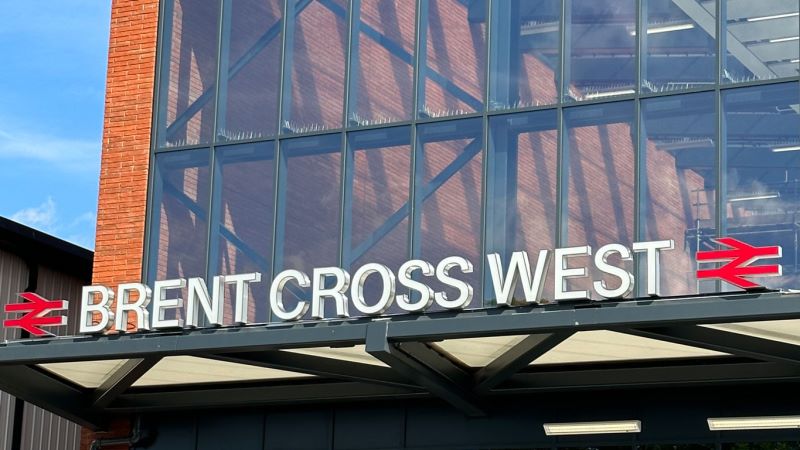NISTA: A new start for UK infrastructure procurement
NISTA’s first steps
With the new government introducing a new long-term plan for UK infrastructure, and the proposed assembly of the National Infrastructure and Service Transformation Authority (NISTA) taking a strategic view of priorities, projects and their delivery, an opportunity is presenting itself to reset and re-calibrate approaches to infrastructure procurement, cost analysis and partnering to drive improved outcomes.
Commercial excellence, carbon reduction, and the creation of effective, future-facing modern infrastructure that delivers for the country will ultimately be the aims. Achieving them requires joined-up thinking and the creation of procurement approaches that enable the future success and resilience of the nation, supporting sustainable growth and providing services and amenities for generations to come.
This is the shared ambition of both government and of our industry, but it is much easier to say than to do. The incoming Procurement Act 2023, which applies to new procurement from October 2024 onwards, has been designed to improve the efficiency and the transparency of procurement processes. But, as we’ve seen in recent history, disruption in the shape of everything from global geopolitical events to localised planning hurdles can destabilise major projects.
Working with the industry to anticipate and overcome potential disruption to improve pipeline project resilience and deliverability will be near the top of NISTA’s to-do list. Once the new authority is established, with supporting policy levers in place and the new public procurement portal launched (it’s currently under development to coincide with the application of the Procurement Act), the challenge of baking in resilience during project pre-delivery stages and procurement, will be better resourced. This is a good start but there will be much more to do.
AI has a growing role to play but needs a guiding hand
Aligning the new route to infrastructure delivery in the UK with a new strategic approach to procurement, which takes the best of current models, reduces cost risk, spreads risks more evenly and shares rewards equitably, makes commercial sense.
In a world where we’re increasingly conditioned to expect instant answers, this sounds like a job for AI. However, the number of companies likely to want to protect their IP and their competitive advantage from algorithmic scrutiny, the limited public availability of all the information needed, and the huge range of variables between project types mean that, for now at least, a comprehensive AI generated answer to the question, ‘what is the best procurement model for infrastructure?’ will involve a wait that lags far behind the potential of the technology - with it performing much more of an assistive role than a definitive one.
Perhaps reassuringly during these times of rapid change, this underlines the importance of expertise developed through real-world procurement and delivery experience in framing the potential of digital to improve routes to delivery. Data is only as valuable as its quality and the level of insight that can be applied to it. The value of people making the right decisions early is, as the CLC set out in their Productivity White Paper, a critical success factor in effective delivery and unlocks the potential to achieve savings, realise viability, generate value, support sustainability, and deliver quality on time.
This year’s model
Major infrastructure projects come with new levels of complexity, comprising of multiple moving parts, and requiring a dynamic and holistic delivery partner approach to collaboration with an end-to-end commitment to the success of the project. Current established models for achieving this were summarised by Infrastructure UK in 2013 as ‘Delivery consortia, Development/Delivery partners, Alliances and Frameworks’ – with each model being ascribed to indicative applications – and it is these models that are still widely used in infrastructure delivery today.
Enabling strategic procurement for infrastructure that enhances the range of model choices should be a NISTA priority. It should factor in learnings from ISO 44001 (developed subsequently to the Infrastructure UK guidance, in 2017) to maximise collaborative value and give greater opportunity for flexible alternatives or hybrid approaches that can make the greatest impact.
This is where up-front, pre-project advice can make the biggest difference and lead to the right procurement model being adopted. With preliminary market engagement notices being introduced under The Procurement Act, an improved opportunity to maximise early engagement and bring through the best ideas has been created - it should be widely taken – despite its ‘optional’ status in law.
Developing client capability
Through pre-market engagement, teams can gain insight and definition from the right specialists across the supply chain. The more collaboration, authenticity and creative incentives this stage can include, the more successful the pre-delivery stage of a major project will be. By utilising the procurement process to inform and develop the client, there is also the potential to achieve an improved project performance at every key gateway.
Procurement teams should focus on embedding shared goals and a supportive corporate culture with clients early, as well as developing contractually aligned and effective collaborative behaviours and relationships, de-risking cost or delays, and even changing remit along the way. I’ve tested this in practice on major infrastructure projects and it works; I truly believe that it should be the standard.
Fundamental to a successful outcome from this approach is the client having a clear understanding of what great looks like for each key element during the pre-delivery stage. This should include having the right stakeholders onside and agreeing the ‘vision for success’, to being supported by a range of sources of advice to ensure that areas such as project quality and cost control don’t depend on one key person, or a single supplier or contractor.
It is usually an unrealistic expectation to expect the client on a major project to hold all the answers. Equipping the client to balance, check and decide through working with a team of potential delivery partners who are competitive, accountable, aligned, solution focused, and have the right experience, can form a platform for innovation and opportunity. This is also a way to build trust and strong relationships around a shared purpose from the outset.
Shifting the dial and sharing best practice
A focus on working with the industry to support the evolution and renewal of procurement models, will reap rewards for NISTA and the projects delivered in the UK infrastructure pipeline under its auspices over the next ten years. Now is a moment where, collectively, we can shift the dial to deliver tangible benefits for the public purse, catalyse the country’s modernisation, and boost its economy.
Sharing the lessons from evolving best practice here, will also benefit partner economies who also face major infrastructure project challenges - helping the UK to restore its leadership position and global reputation for excellence across every stage of infrastructure delivery.












